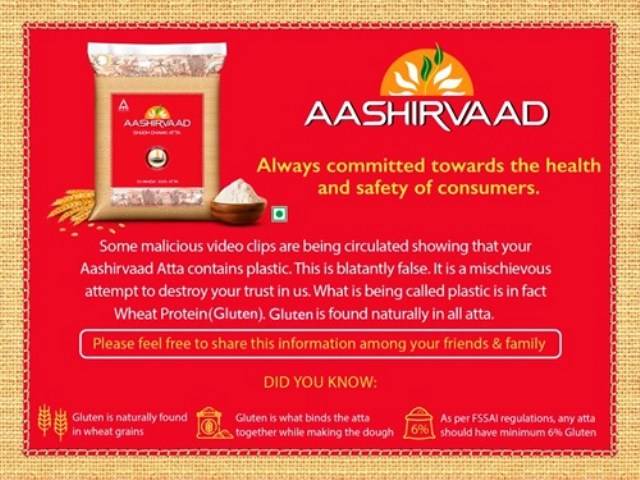
These days there are several videos on Whats App showing the Atta is having plastic in it.
Does wheat flour or ‘atta‘ contain plastic? Several videos on social media showing kitchen experiments undertaken by ordinary Indians would have you think so. However, all stakeholders – from food scientists to consumer goods giant ITC, the company that manufactures ‘Aashirvaad Atta’; have categorically rubbished the claim.
Gluten, a naturally occurring protein in wheat, is what gives wheat flour its elasticity. Videos like the ones below have given gluten a bad rap by misidentifying it as plastic. (See tweets below) The videos allege that because the dough stretches and holds it shape in spite of being run under water, it must contain plastic.
The Food Technologists who have debunked the claim that wheat flour contains plastic.
“All these are false and unscientific claims,” Uday Annapure, Head of the Department of food engineering and technology at the Institute of Chemical Technology, said. “These are elastic proteins known as gluten present in all varieties of wheat in the range of 10 percent to 18 percent.

Gluten is a protein naturally occurring in cereal grains such as wheat, barley and rye. It is know for its viscosity and elasticity. Gluten is the reason why a dough is elastic, stretchy, chewy and can hold its shape. This why most gluten-free products are crumbly and disintegrate quickly.
Wheat flour is made up of carbohydrates, protein (gluten) and fiber to some extent. When you mix a liquid (water or milk) with flour, gluten proteins break down and hook on to each other forming a network of gluten strings. Kneading the dough aligns these strings and helps form a strong bond. Wheat flour has about 6 to 12 percent gluten, enough to provide a gluten network that holds carbohydrates together.

The views of FSSAI
The Food Safety and Standards Authority of India in its GET FOOD FACTS RIGHT has answered several questions such as ‘what is wheat protein?’ and ‘is gluten good or bad for health?’
Wheat flour contains 2 classes of proteins
1. Glutenin which is responsible for elasticity
2) Gliadin which is responsible for raising of the dough. In the presence of water, these two proteins bond together. This creates an elastic network.” – FSSAI
“Gluten may act as a prebiotic, feeding the “good” bacteria in our bodies. However, gluten may cause health problems for persons with gluten-related disorders, such as celiac disease, dermatitis herpetiformis and other forms of nonceliac gluten sensitivity.”- FSSAI















